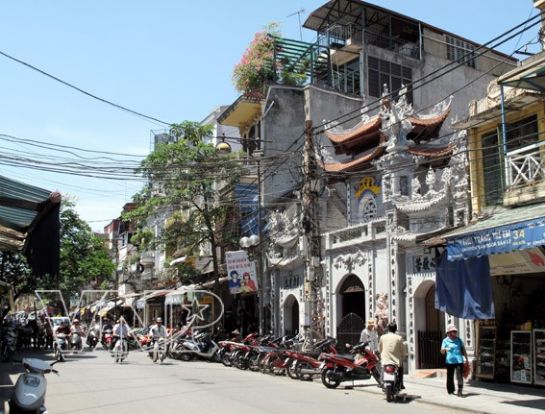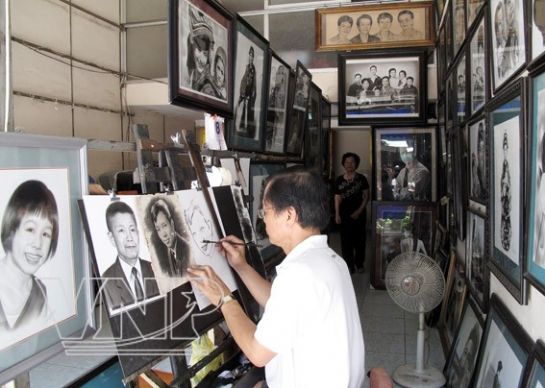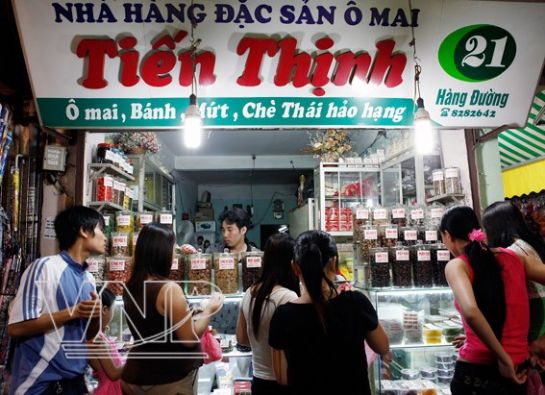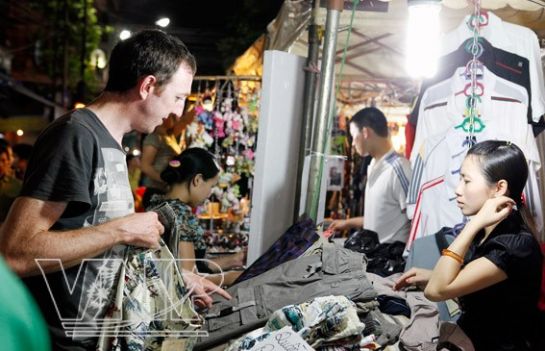|
Belonging to the
Old Quarter of Hanoi, Hang Duong (Sugar) Street in Hoan Kiem District
still retains its typical flavour that made it famous in
Hanoi
, processing and selling
all kinds of sugar and sweets.
Every year when people prepare
for the Mid-Autumn Festival or Tet (lunar New
Year Festival), the street becomes most bustling and animated. On these
occasions, the owners of big shops on this street, such as Ngoc Anh, Ngoc
Dung, Tung Hien, etc., can earn as much as they made in the previous ten
months.
|

A section ofHang Duong Street with Cau Dong
Pagoda
which has been classified as a historical
relic. .
|
|

nbsp;A portraying shop on Hang Duong
Street.
|
|

O Mai
made by the locals on Hang Duong
Street has become a
specialty of Hanoi.
|
|

Foreign tourists buy goods on Hang Duong
Street.
|
In the 1960s the
locals started participating in other trades to meet the demand of
Hanoians and people from neighbouring provinces. As a result, many other
products are sold on the street, such as cloth, fashion accessories,
souvenirs, portraitures, and particularly O mai (sweetened and
spiced dried fruits), a typical nourishment of Hanoi that is made
by locals. Although O mai has never been mentioned in ancient books
as a speciality in the culinary treasure of the
land of
Trang An and former name of
Hanoi
, it has
quickly become very popular in the last four decades. It appears
everywhere, not only in stores on
Hang Duong Street
, but also on other
streets in
Hanoi
and in the northern
cities and provinces, such as Hai Phong, Thai Nguyen, Hung Yen, Thai Binh
and Nam Dinh.
Together
with the ups and downs of history, the street’s appearance has changed but
the treasured old houses like Vinh Hanh Communal House (at No.19B), Duc
Mon Communal House and Pagoda (at No. 38) and Cau Dong Pagoda which have
been classified as national historical relics are still preserved on the
street.
Story by Tran Tri
Cong
Photos by Tat
Son |